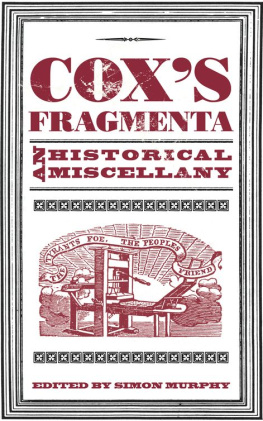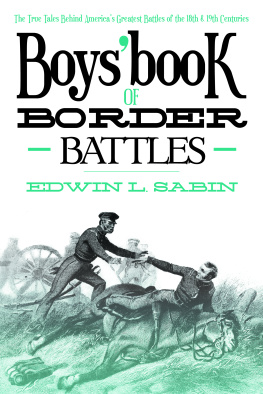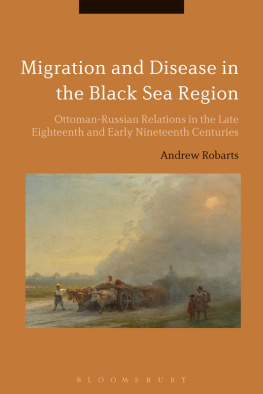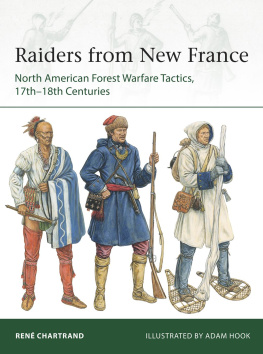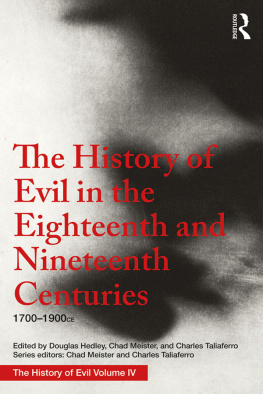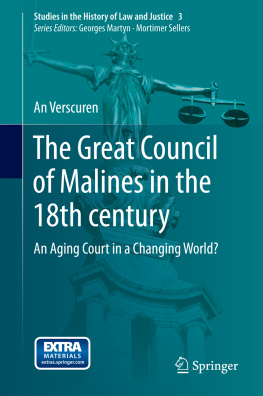If an inhabitant of some remote Country, totally uninformed of the Political business of this, but sufficiently skilled in the English language to read the newspapers, was to come into this country, and resort to the public prints for information respecting its Government, Laws, People, &c. &c. it may not be incurious to consider what in all probability his opinion of them would be. I think, then, that it is probable that he would in the first place set it down as a certainty, that the minds of the people were in general but as so many blank sheets, for fools and designing men to scribble what absurdities they pleased upon; so that the Government was of little other use than to furnish a topic for the abusive pens of Grub-street Garreteers; that its magistrates served only as objects of invective for the factious scribblers of the day; and that its Laws were either in themselves inefficient, or their Executive Officers supinely negligent in the execution of them.
Senex
The Fragmenta must be one of the stranger texts to lurk in the depths of the British Library; a leviathan composed of ninety-four folio volumes, each volume containing well over 200 pages, each page featuring disparate clippings from the newspapers of Birmingham and London ordered in a chaotic chronology from the late 1750s through to 1833. The topics that jostle alongside one another vary enormously, stretching from warfare to weevils, from cricket to crime, and from modes of courtship common in Fife to frog-inhabited barometers. All in all, the collection takes up over 20ft of shelving, and is the work so far as we know of a single man. Un-indexed, un-indexable and scarcely annotated, it defies interpretation and conventional scholarship. Francis Coxs enigmatic collection simply begs the question Why?
A brief survey of the origin and provenance of the work elicits no straightforward answers. We know Francis Cox lived from 1752 to 1834 and plied his trade first in Birmingham and later in London as either a linen draper or a brush maker. He was married with two daughters. Few other facts about his life are recorded, and in truth it is unlikely we would be aware of Cox today, were it not for the curious clause in his will (written in August 1834) in which can be found the first extant reference to his magnum opus:
Moreover should the volumes called the Fragmenta be in my possession at the time of my death consisting of one hundred folio volumes for which I have been collecting for upwards of half a century be deemed worthy the acceptance of the Governors I leave devise and bequeath them to the Museum in Russell St. Bloomsbury.
Cox died a little over a month later, and his widow Sarah wrote to the governors to inform them of her late husbands wish, asking only that she be granted time to look over the collection before it was received by the Museum. Examining the collection became rather unsurprisingly given its scale a much more formidable undertaking than she had anticipated, and it was not until August of the following year that the Fragmenta finally entered And there it has quite patiently remained for the last 175 years, during which time only two things of any interest have occurred to it.
Firstly it was re-catalogued in 1922, when the volumes were (mis)entered under the following description:
Burney (Charles) DD: A collection of miscellaneous cuttings from newspapers, made for Burney and continued after his death.
The sudden link to the Reverend Charles Burney (17571817) makes a strange sort of sense. Burney was a classical scholar and bibliophile, conspicuous during his youth for dismissal from Gonville and Caius College under charges of pilfering books from the Cambridge library and replacing the university arms with his own. His sister later suggested that this lapse in his judgement was due to a mad rage to possess a library, though others have suggested he sold the books to cover mounting gambling debts. In either case, Burney eventually did gather together an astounding library containing over 13,000 printed books and 500 manuscript volumes, bought by the British Museum in 1818 for the princely sum of 13,500. The collection was valuable, not only for its many classical editions, but also for the collection of newspapers it contained. Burneys maiden aunts managed Greggs-Coffee-House, and from 1781 they collected the papers for him. These have recently been digitised by the British Library.
Given this mutual conviction of the present and future significance of newspapers, it is not difficult to see how a cataloguer might have considered Coxs horde as an extension of Burneys collection, and indeed the strange wording of Coxs will, should the volumes called the Fragmenta be in my possession at the time of my death, suggests he half-expected them to be retrieved by another party. Despite the impulse to connect Cox to such an interesting figure, there are no solid ties linking the men. Their divergent methodologies Cox cut the papers to single articles, often divesting them of both date and imprint, whereas Burney left them whole also mark the collections as separate endeavours.
The second event of note occurred in 1966 when leading librarian and bibliographer C.B. Oldman wrote a survey of Cox and his collection. That Oldmans ten-page commentary remains to this day the definitive (and only) work is entirely to his credit, but also perhaps hints at the genuine obscurity of Cox. Despite the efforts of Oldman, the ninety-four volumes are all that Cox seems to have left us at least for the present.
My first contact with the text was during a seminar at the British Library, when a friend flipped open volume seventeen at random and after a brief snort of baffled laughter read aloud:
Tuesday the Otter hounds of Mr. Coleman of Leominster, killed in Monkland mill-pond, an otter of extraordinary size; it measured from the nose to the end of the tail four feet ten inches, and weighed 34lb. This animal was supposed to be nearly 8 years old, and to have destroyed a ton of fish yearly.
I was hooked. The dubious yet purported accuracy of the figures, coupled with such questionable newsworthiness, lent the excerpt a kind of bathos. The archaic language (otter hounds) set the article as utterly removed from the papers of today, yet the all-pervasive obsession with extremes (biggest, longest, most costly) depicted human nature at its most nosey, vicarious and banal, and whats more, reveal it as historically constant. As temporally distant readers of Coxs collection we can go one further than the inhabitant of the remote country postulated by Senex: we can scour the newspapers for the idiosyncrasies of time, as well as place. The past may well be a foreign country, but surely there can be few more unique or amusing ways of comprehending an era than to sit down to breakfast with the crumbs of its papers.
. And not the 100 stated by Coxs will. It is perhaps possible that the century was a target he had presaged (with an eye to his advancing age) as a suitable place to conclude.

